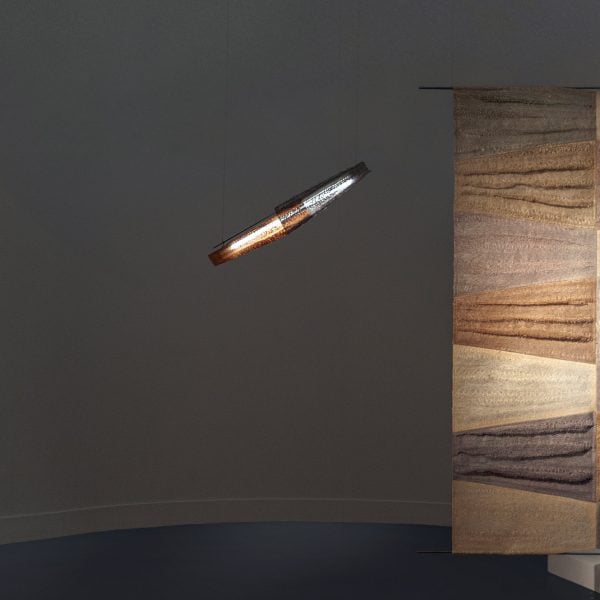Paris-based Palestinian designer Samer Selbak has created a collection of lighting made from the luffa plant dyed with vegetables.
Named Luffa, the collection includes two pendant lights and a space divider, that were crafted from naturally dyed luffa, steel and cellulose paper.
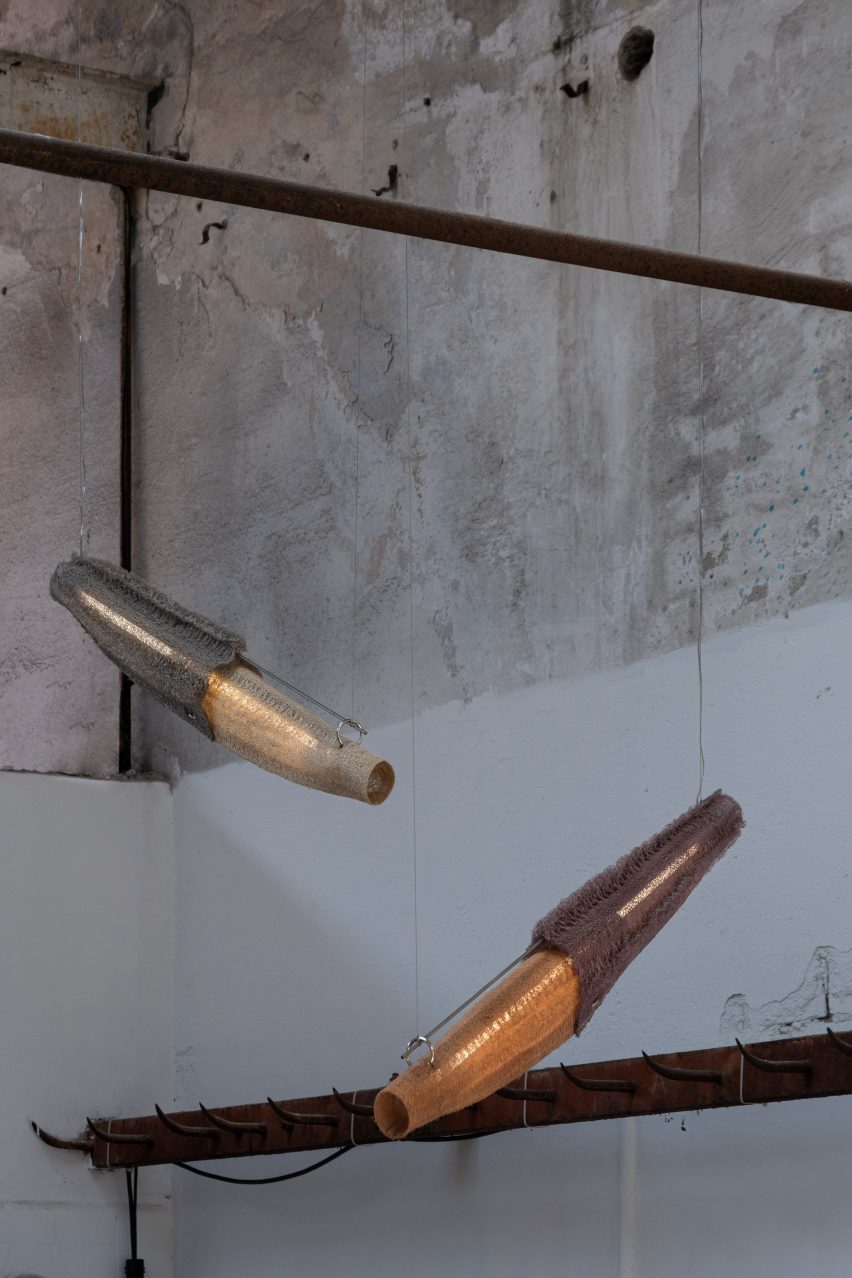
Luffa, which has traditional uses both as a bathing sponge and in cooking, has natural tones of beige. For the collection, Selbak dyed the luffa with vegetables including red cabbage, onion skin and avocado skin to create muted colours of brown, pink and blue.
“The dyeing process is magical and very surprising, changing one detail leads to different results, which I find much more interesting than industrial dyes,” he said.
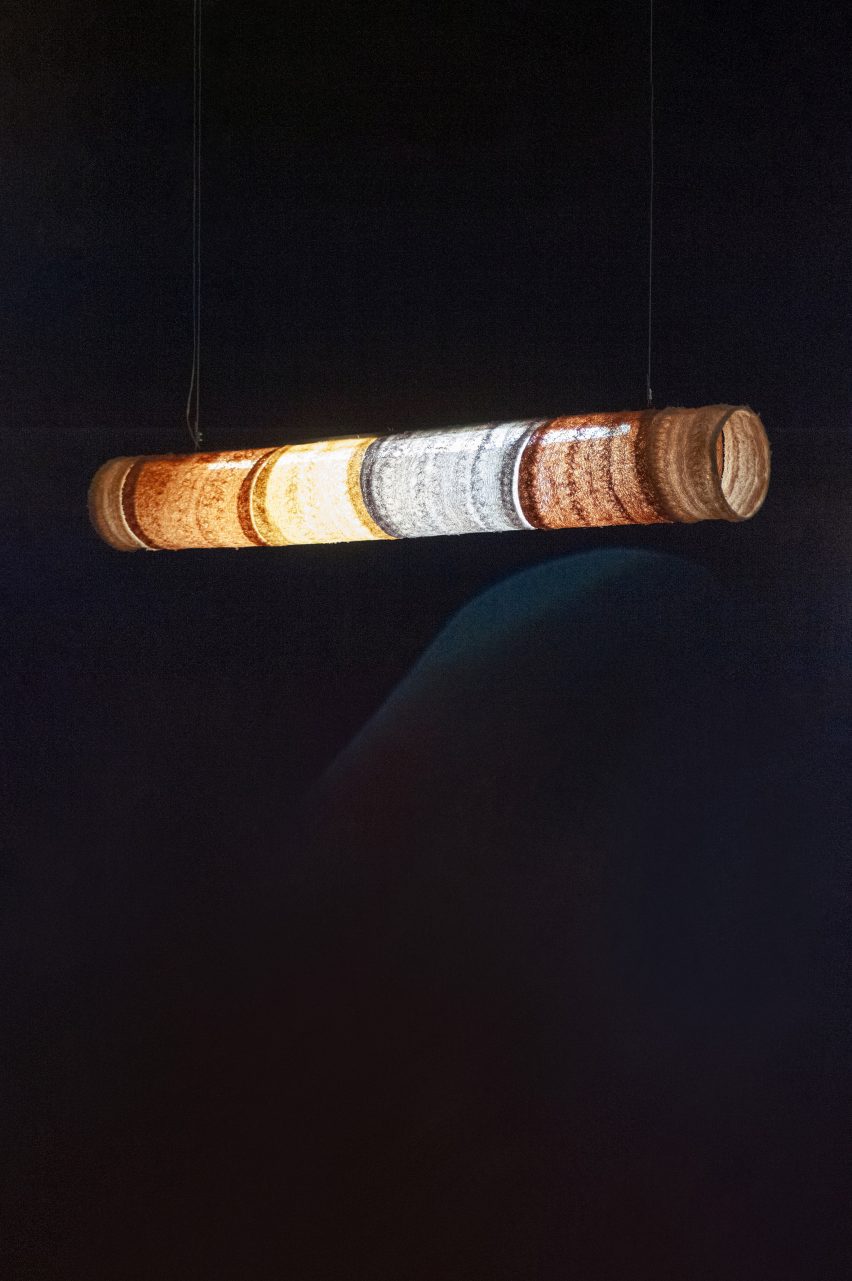
The material was then heat-compressed and folded into its desired shape, before being sewn together in its final form.
The Saffeer pendant light hangs diagonally, structured with an inner steel body and cased in the luffa pattern to create a tubular shape.
Selbak also created the Nafaq pendant light for the collection, which takes a similar form, while horizontally suspended.
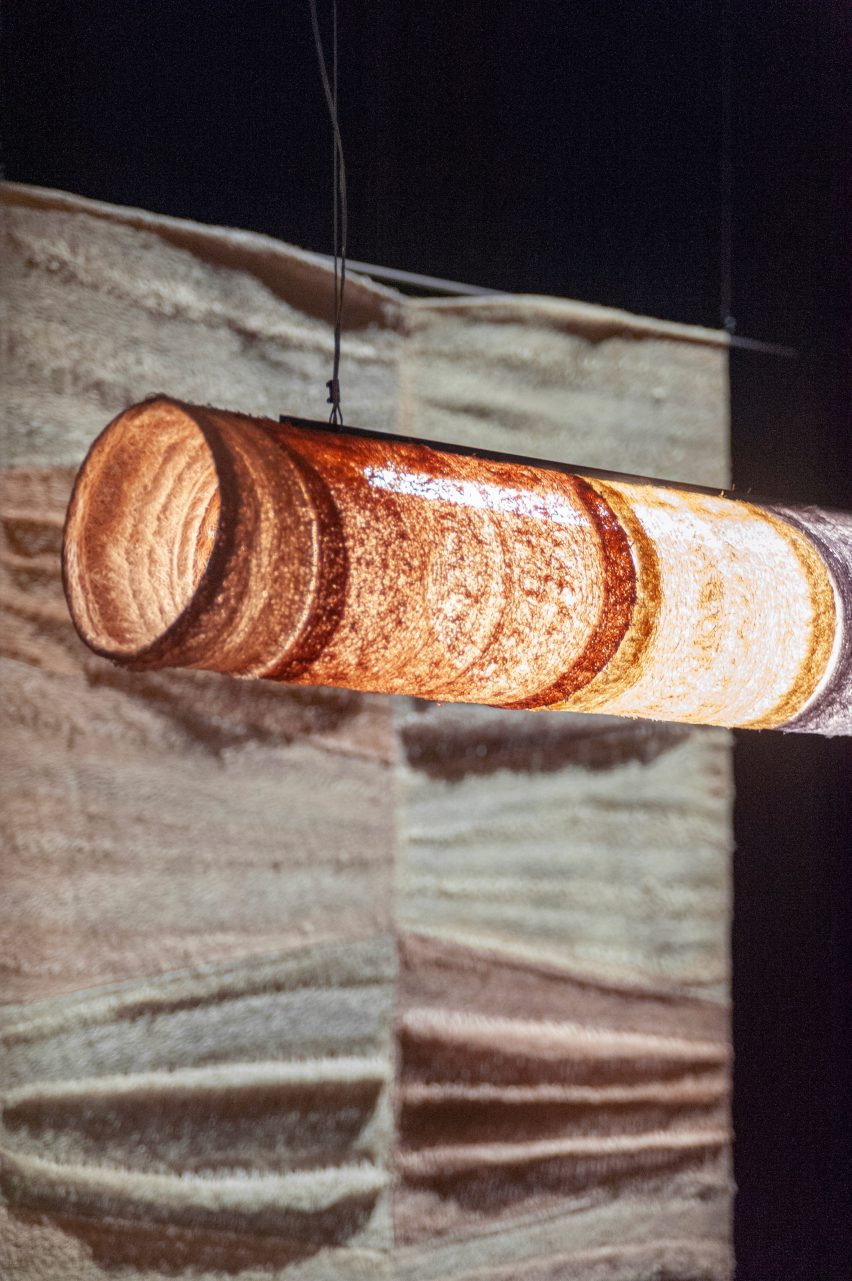
When illuminated, the lights emphasise textures and patterns of the luffa, following the designer’s intentions for them to create a “sub-aquatic mystical presence”.
Using the luffa as a material for a luminary object creates a deep interaction between light and shadow, colours and shapes, resembling the beauty of corals – a liminal state between plant and mineral, between a living creature and an object,” said Selbak.
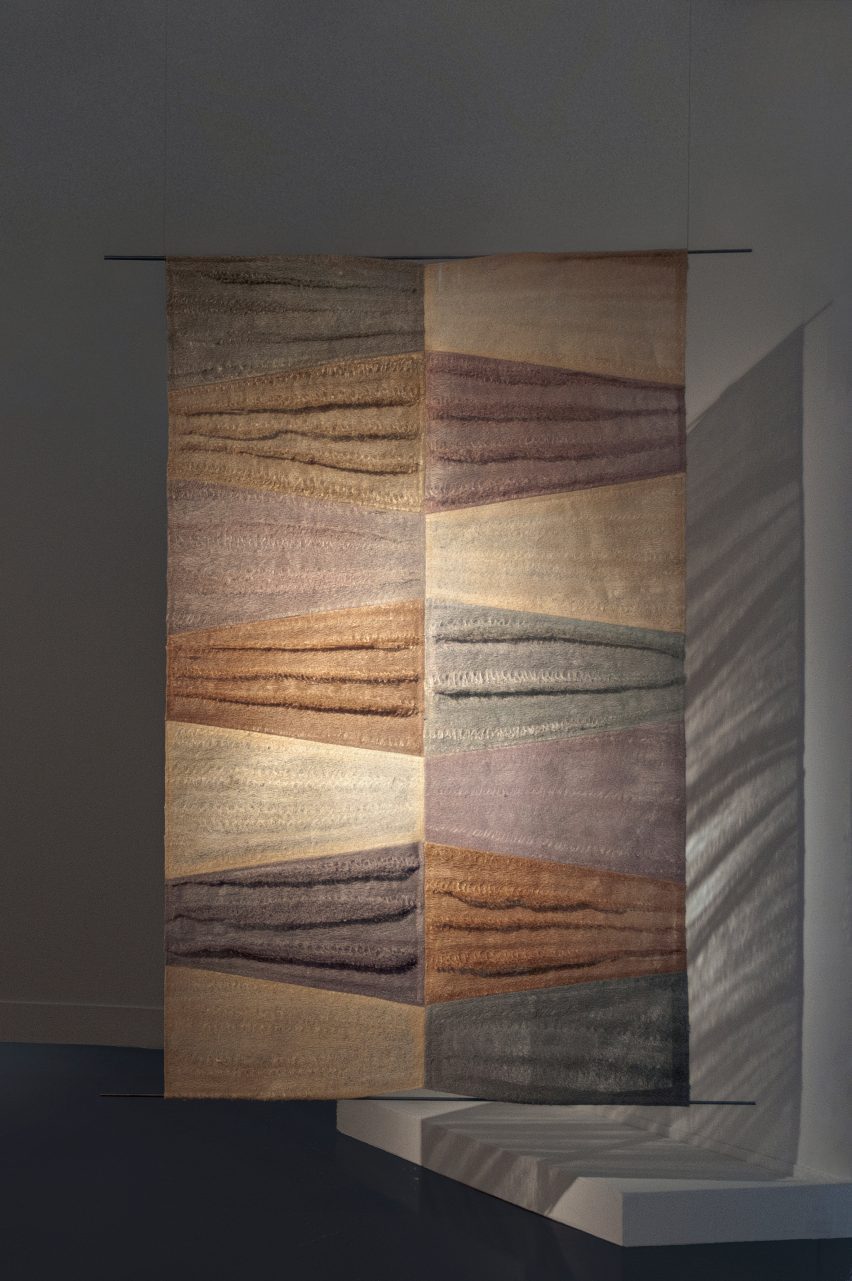
The designer also created the Reef space divider from sheets of luffa in varying dyed tones assembled in a geometric pattern.
Supported by two steel bars, the piece hangs vertically to act as “a functional object as well as a sculptural piece”.
According Selbak, the piece integrated luffa’s breathable quality, while bringing natural materials into a home.
“The plant fibres are durable and biodegradable, allowing both air and light to pass through, while still functioning as a divider,” he said.
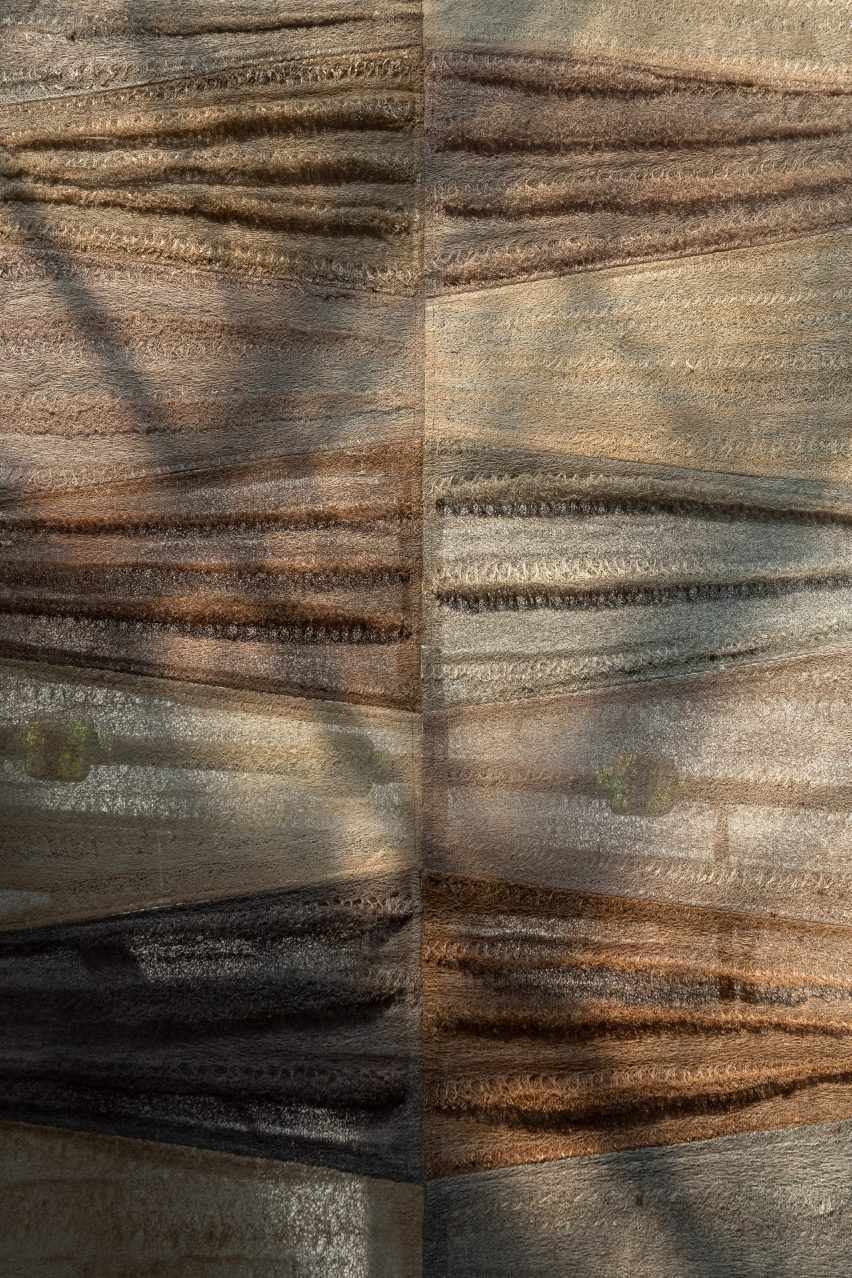
Beyond its sustainable and aesthetic qualities, Selbak chose to use luffa for the collection to honour his Palestinian roots and associations with the material, which is typically known in English by an alternative spelling of loofah.
“For me, there is a symbolic kind of resistance in the face of suppression and appropriation that we Palestinians are regularly subjected to,” he said.
“I wanted to highlight the beauty and potential that I saw in this almost forgotten material, with even its name being appropriated.”
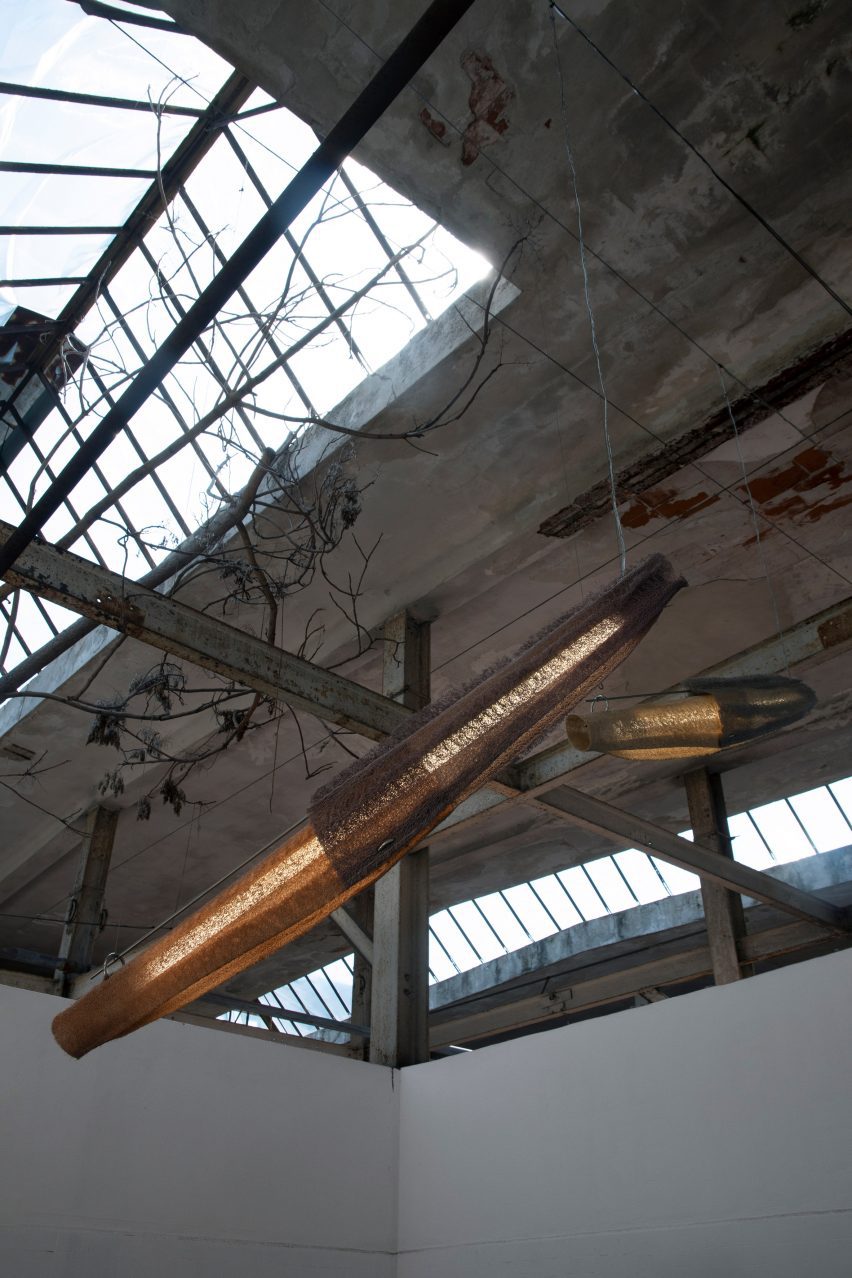
He also recalls sentimental childhood memories of luffa that have informed his design practice.
“It reminds me of my grandparents’ garden, where they used to grow luffa every year and then use it as a shower sponge,” he said. “As a kid, I remember being intimidated by its shape and size – it looked strange and alien-like to me.”
“Understanding where it originates from at a young age, seeing it turn from a fruit to a basic household object, has probably shaped a part of my curiosity as an artist and designer today,” he continued.
Selbak graduated with a master’s degree from the École des Arts Décoratifs in product design in 2022, before establishing an interdisciplinary design practice that features interior objects and and homeware.
Other designs on Dezeen that incorporate natural materials include Fefostudio and Kamilla Csegzi’s mycelium table and a sofa made from natural cork and latex by Isomi.

